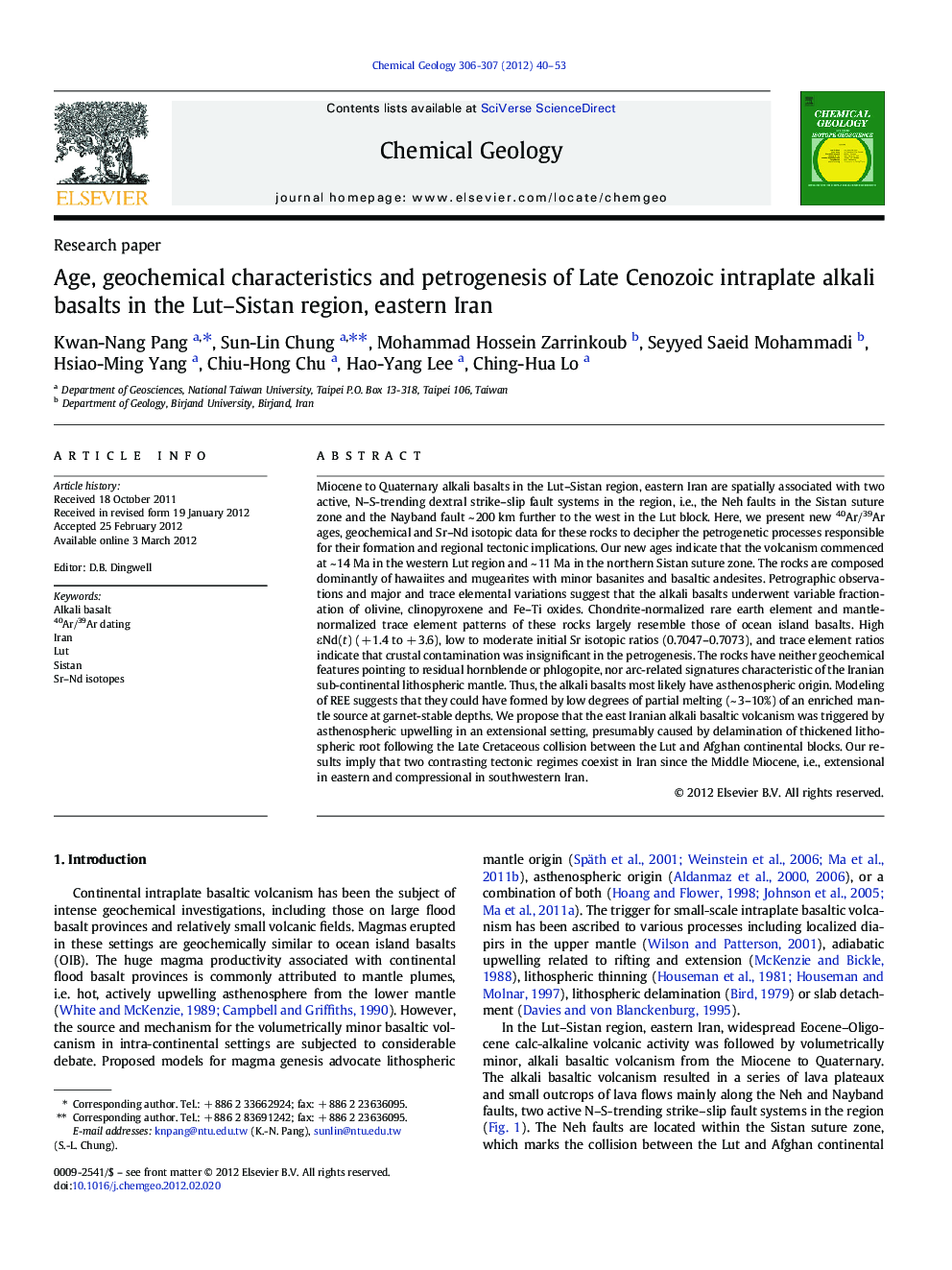| Article ID | Journal | Published Year | Pages | File Type |
|---|---|---|---|---|
| 6436994 | Chemical Geology | 2012 | 14 Pages |
Miocene to Quaternary alkali basalts in the Lut–Sistan region, eastern Iran are spatially associated with two active, N–S-trending dextral strike–slip fault systems in the region, i.e., the Neh faults in the Sistan suture zone and the Nayband fault ~ 200 km further to the west in the Lut block. Here, we present new 40Ar/39Ar ages, geochemical and Sr–Nd isotopic data for these rocks to decipher the petrogenetic processes responsible for their formation and regional tectonic implications. Our new ages indicate that the volcanism commenced at ~ 14 Ma in the western Lut region and ~ 11 Ma in the northern Sistan suture zone. The rocks are composed dominantly of hawaiites and mugearites with minor basanites and basaltic andesites. Petrographic observations and major and trace elemental variations suggest that the alkali basalts underwent variable fractionation of olivine, clinopyroxene and Fe–Ti oxides. Chondrite-normalized rare earth element and mantle-normalized trace element patterns of these rocks largely resemble those of ocean island basalts. High εNd(t) (+ 1.4 to + 3.6), low to moderate initial Sr isotopic ratios (0.7047–0.7073), and trace element ratios indicate that crustal contamination was insignificant in the petrogenesis. The rocks have neither geochemical features pointing to residual hornblende or phlogopite, nor arc-related signatures characteristic of the Iranian sub-continental lithospheric mantle. Thus, the alkali basalts most likely have asthenospheric origin. Modeling of REE suggests that they could have formed by low degrees of partial melting (~ 3–10%) of an enriched mantle source at garnet-stable depths. We propose that the east Iranian alkali basaltic volcanism was triggered by asthenospheric upwelling in an extensional setting, presumably caused by delamination of thickened lithospheric root following the Late Cretaceous collision between the Lut and Afghan continental blocks. Our results imply that two contrasting tectonic regimes coexist in Iran since the Middle Miocene, i.e., extensional in eastern and compressional in southwestern Iran.
► Middle Miocene to Quaternary ages of the east Iranian alkali basaltic volcanism confirmed by new 40Ar/39Ar dating results. ► OIB-like geochemical features and asthenospheric origin of the alkali basalts. ► Low-degree melting of enriched mantle with residual garnet in magma formation. ► Asthenospheric upwelling associated with lithospheric delamination as the trigger of volcanism. ► Two contrasting tectonic regimes (i.e. compressional and extensional) in Iran from Middle Miocene to Quaternary.
